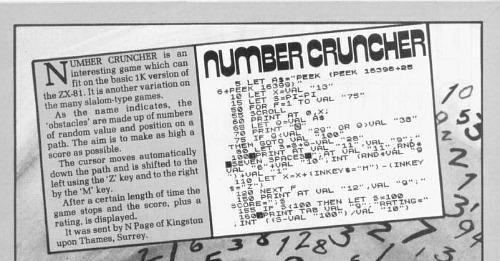David Hayward has a try at entering hundreds of lines of BASIC again
Type-in programs, as found in the many magazines of the late 70s and early 80s, were once the only source – other than books loaned out from the local library – of technical programing resources we could get our hands on.
We’re willing to bet that many of you reading this spent many an hour in front of a burning hot ZX81, Spectrum, BBC Micro or Commodore with a magazine opened up on the BASIC or machine code listing, squinting from one to the other in an effort to type it all out with as few mistakes as possible.
Of course, the old computing joke is that once you’d spent several hours typing it in and once you’d entered Run, the program usually returned with something like ‘Stop – Error on line 4097’. To those who knew what they were doing, a quick look at the line and a change in variable or something would fix the problem. Those who were typing it in for a free game usually ended up deleting the line and hoping for the best.
For us the type-in program listing was a learning experience. It taught us BASIC the Spectrum manual, as well as how to animate a sprite across the screen, change the colours of a backdrop, present something in an isometric view and how to get some great sound effects and title music from our limited machines.
With the help of the type-in program listing we evolved from using BASIC, moving on to assembly and other forms of machine code and higher level computer languages. It fed our imaginations and we could expand on the listings to make our own mark on them.
Its History
The type-in program listing can traced as far back as the early 70s, with the publishing of the book 101 BASIC Computer Games by David Ahl.
According to Ahl, he put out a call for game code and was inundated with reams of listings from academics across the US. Obviously, the trend caught on and as the rise of the home computer, then in kit form still, started to take hold more, and more users wanted something to actually do with their machines after sweating over a soldering iron building them.
Later, the computer magazines of the time started to print listings sent in by readers. C&VG, Sinclair User, Micro Adventurer and Personal Computer Weekly all contributed to the type-in program listing, with page on page of printed BASIC games, routines and tools.
As time moved on, BASIC listings began to fade out in favour of lengthy lists of assembly, which proved to be quite a challenge to both test, print and eventually read.
Over time, though, the 8-bit home computer gave way to the 16-bit machines and consoles, which in turn phased out the type-in program listing and limited it to just a few exclusive magazines. As with most print, in time the internet did away with the need to type in a listing.
The Good
A free game, a great learning resource and a unique interaction with your favourite magazine.
The Bad
Listings could be riddled with errors, badly printed text could make it impossible to read, and some of them were simply too long to tackle.
Conclusion
Farewell type-in program listings; we were both thrilled and frustrated by you, but we did love seeing you in the pages of our favourite magazines.
Did You Know?
• C&VG started type-in listings in the November issue in 1981, the first issue.
• Sinclair User’s type-in listings ran from April 1982 through to April 1993.
• The magazine staff would often stay up most of the night entering the list for printing and testing, only to have the machine fail and lose everything before saving it.
